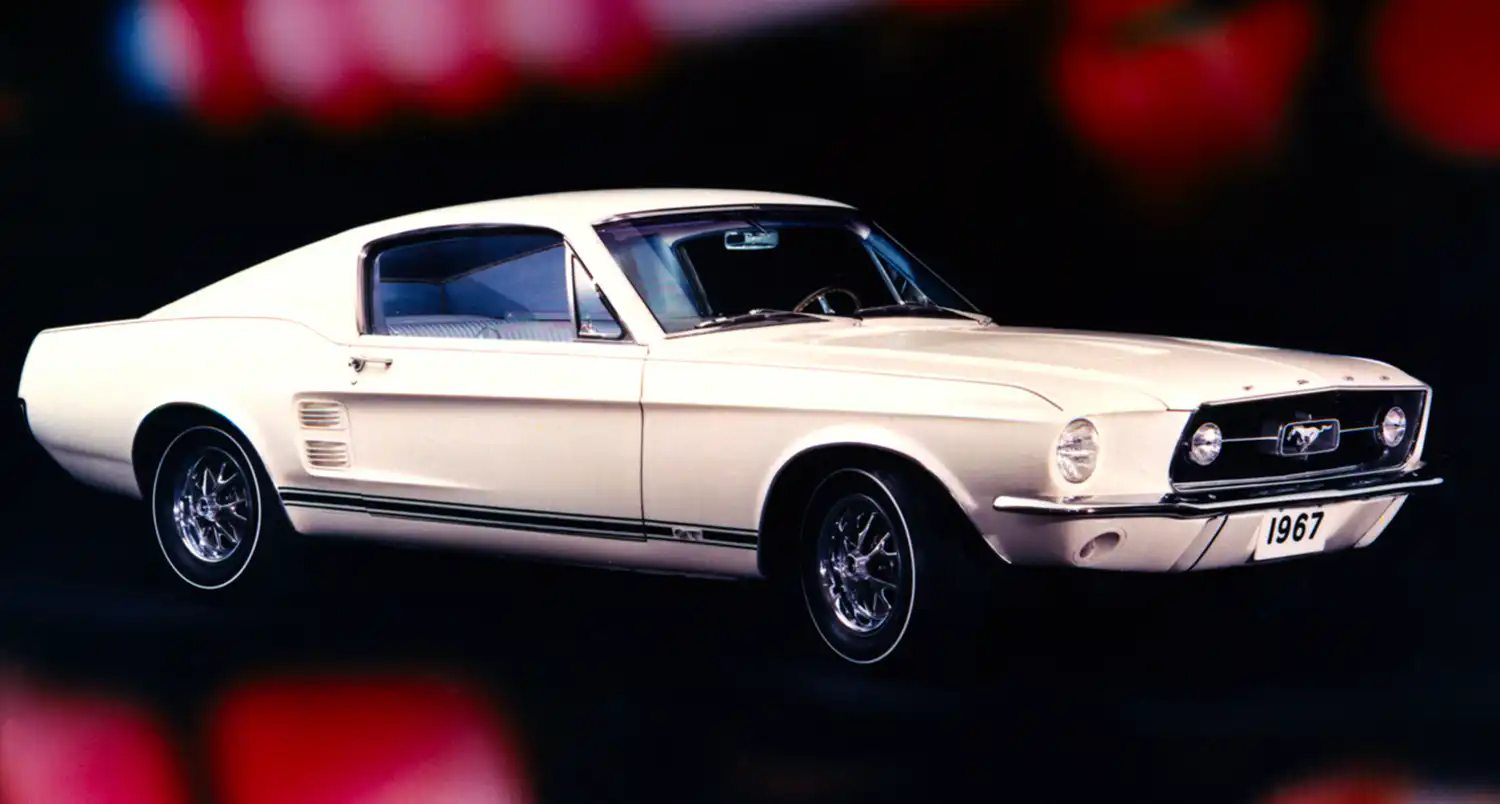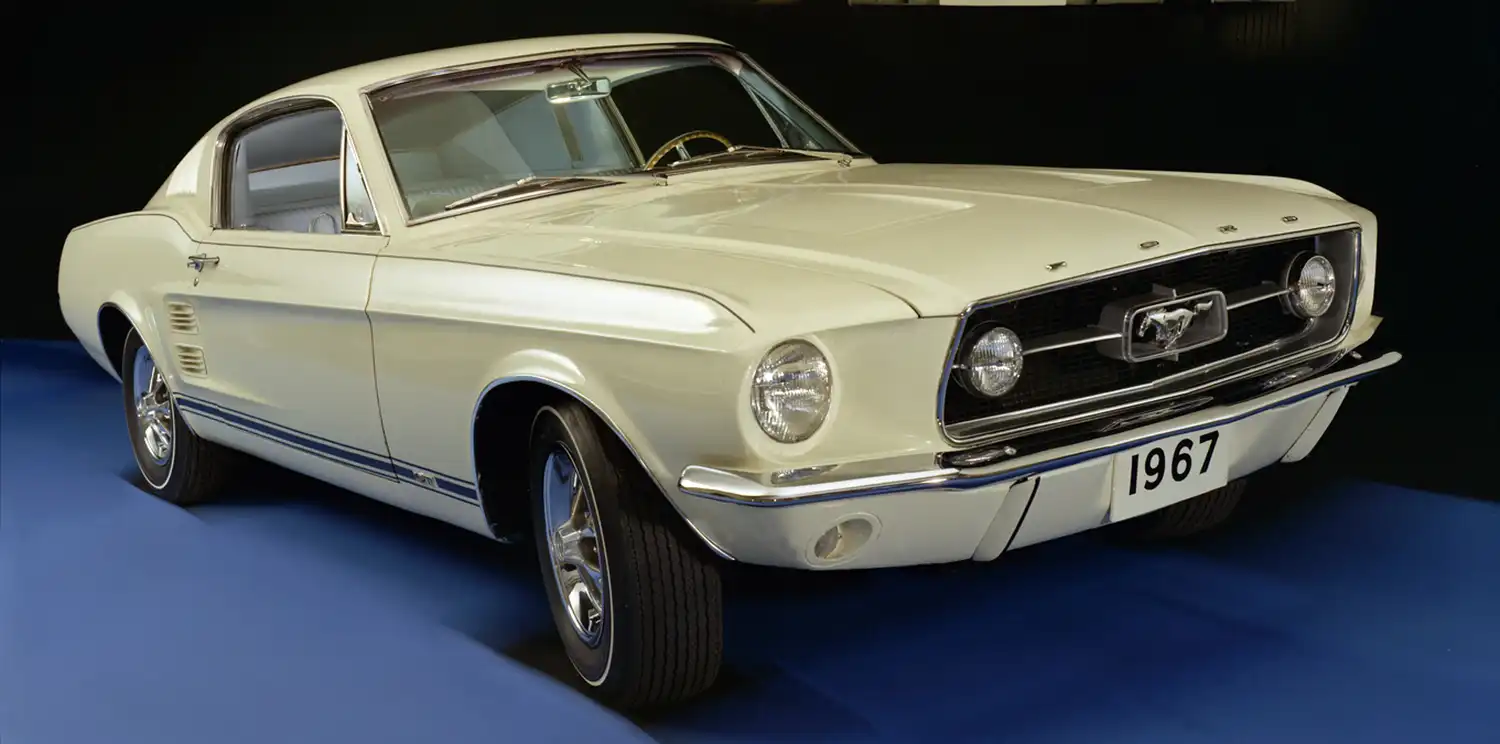
The Ford Mustang, since its initial debut in mid-1964, quickly captured the hearts of the American public, establishing a new segment of sporty and affordable coupes and convertibles known as pony cars. The first generation of the Mustang saw continuous evolution, with the 1967 model year representing a significant step forward in terms of styling, size, and available power. The 1967 Mustang underwent a notable redesign, growing slightly larger to accommodate a big-block V8 engine. This expansion also resulted in a more aggressive and muscular stance. The fastback body style, with its sleek, sloping roofline extending to the rear decklid, became particularly popular, embodying the sporty spirit of the Mustang. The GT package, an option available across all body styles, added performance enhancements and distinctive visual cues that further amplified the Mustang’s appeal. The 1967 model year is often considered a high point in the first generation Mustang’s design, balancing classic proportions with a more assertive presence.
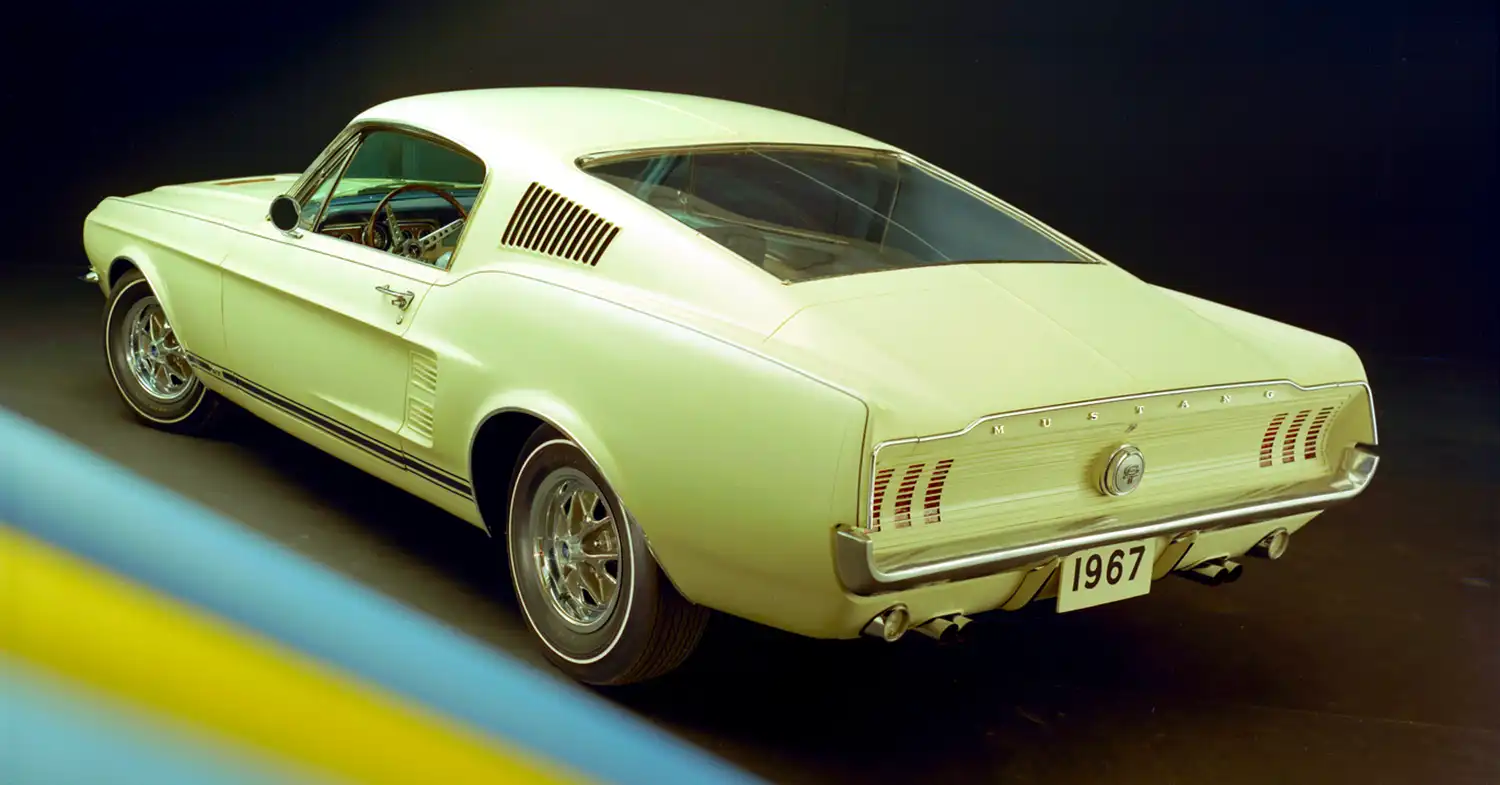
Power and Performance: The 1967 Ford Mustang GT fastback offered a range of potent engine options designed to deliver thrilling performance. While smaller displacement V8s were available, the GT designation typically signified the inclusion of a more powerful engine. A popular choice was the 390 cubic inch (6.4-liter) Ford FE series V8, which produced a substantial amount of horsepower and torque, providing impressive acceleration and a satisfyingly deep exhaust note. For those seeking even more power, the legendary 428 cubic inch (7.0-liter) Cobra Jet V8 became available later in the model year, transforming the Mustang GT into a true high-performance machine capable of challenging established muscle cars. These engines were typically paired with either a three-speed manual, a four-speed manual, or a three-speed automatic transmission, allowing buyers to tailor the driving experience to their preferences. The GT package also included performance upgrades such as a stiffer suspension, quicker steering ratio, and front disc brakes, enhancing the car’s handling and stopping capabilities to match its increased power.
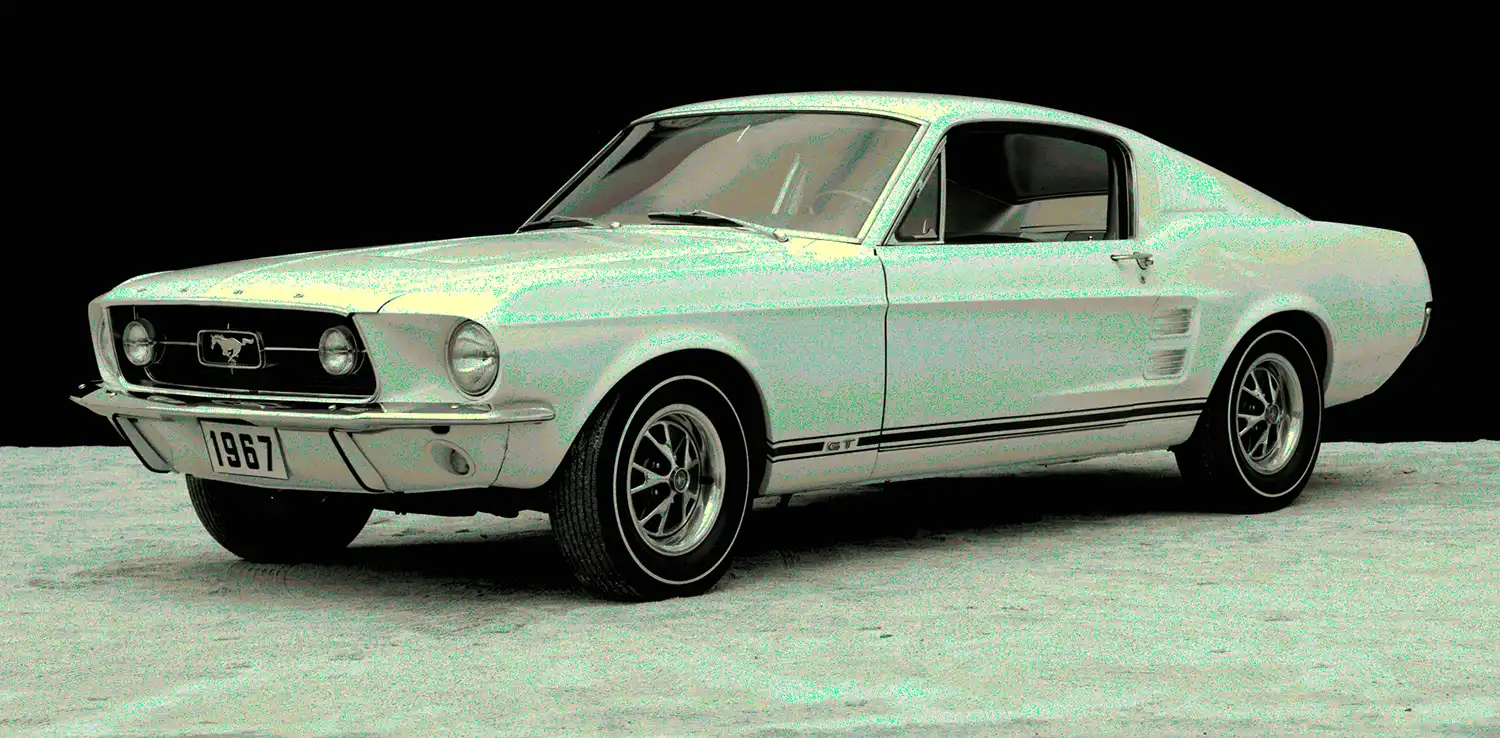
The interior of the 1967 Ford Mustang GT fastback reflected the sporty yet practical nature of the car. The dashboard featured a dual-cowl design, a characteristic of early Mustangs, with a clear and functional layout of gauges and controls. Bucket seats were standard, providing individual comfort for the driver and front passenger, and a rear bench seat offered seating for additional passengers, although space in the fastback’s rear was somewhat limited due to the sloping roofline. The GT package often included interior enhancements such as special badging and trim. Options like air conditioning, power steering, and various audio systems allowed buyers to personalize their Mustangs for added comfort and convenience. The overall design emphasized a driver-focused environment, aligning with the Mustang’s sporty image.
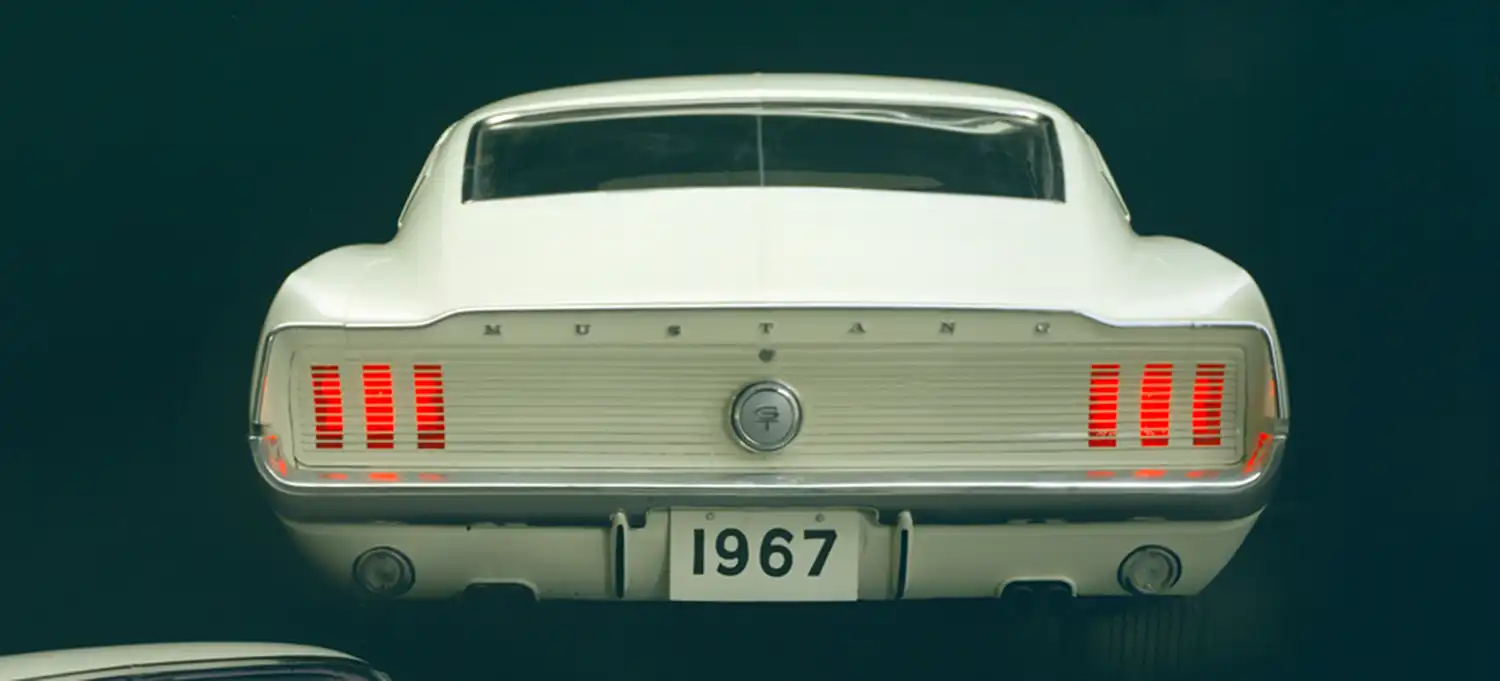
The exterior styling of the 1967 Ford Mustang GT fastback was a key element of its widespread appeal. The longer hood, short rear deck, and the fastback’s sweeping roofline created a dynamic and athletic profile. The GT package added distinctive visual cues that set it apart from other Mustangs, typically including fog lamps integrated into the grille, GT badging on the fenders and grille, and often styled steel wheels or other sporty wheel options. The taillight design featured three vertical bars on each side, a signature Mustang element that has been carried through various generations. Chrome trim was used judiciously to accent the car’s lines, adding a touch of classic American automotive styling. The overall design of the 1967 Mustang fastback, especially in GT trim, exuded a sense of youthful energy and performance.
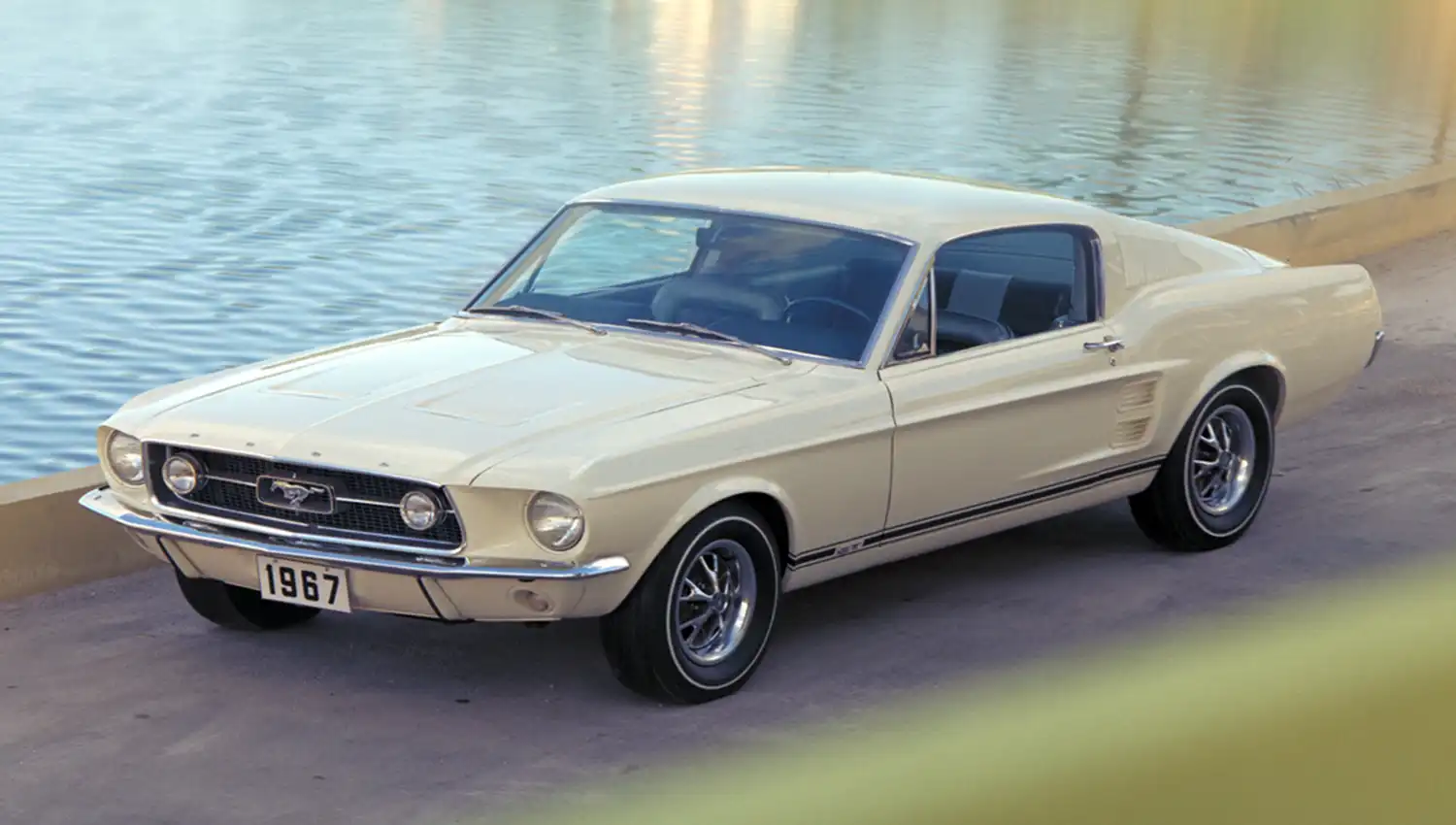
Today, the 1967 Ford Mustang GT fastback holds a significant place in automotive history and remains highly sought after by collectors and enthusiasts worldwide. Its iconic styling, potent performance options, and cultural significance have cemented its status as a true American muscle car legend. Well-preserved or restored examples are frequently seen at classic car shows and command strong values in the collector car market. The 1967 Mustang’s appearance in numerous films and its association with the burgeoning muscle car era further contribute to its enduring appeal. It represents a pivotal moment in the Mustang’s history, showcasing the evolution of a beloved automotive icon and its lasting impact on American car culture.
Summary:
- 1967 marked a significant redesign for the first-generation Mustang.
- The fastback body style offered a sleek and sporty profile.
- GT package included performance and visual enhancements.
- Offered powerful V8 engine options, including the 390 and 428 Cobra Jet.
- Typically featured a four-speed manual transmission.
- Interior designed with a driver-focused layout and available options.
- Iconic exterior styling with GT-specific badging and features.
- Remains a highly desirable classic muscle car.
Disclaimer: Information regarding specific engine output and performance figures for the 1967 Ford Mustang GT fastback can vary based on sources and specific vehicle configurations. Consult reliable automotive resources for precise details.
Source: Ford Heritage Vault
AI Assistance: Gemini
